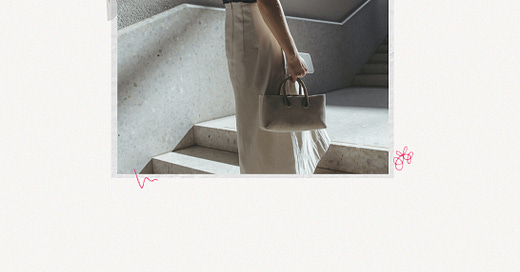I think the question is: who isn’t experiencing the impact of the cost of living crisis right now? In the aftermath of many lockdowns, Liz’s brief premiership and the gas price rise, it feels like everything in the UK has gone downhill and we’re all having to adjust. I could talk about the politics for ages, but as a part-time sartorial girlie, today I wanted to talk briefly about the impact I’m seeing these economic factors have on the fashion world.
Anecdotally, I’m hearing from stylist friends that work is dry. Creators I know are finding that fashion brand collaborations are moving or shrinking in size as retailers adjust to different summer sales than they expected. Perhaps this is due to the weather; summer heat hasn’t reached the UK yet so I can’t imagine their new collections are flying off the shelves. Honestly though, I’d imagine the true answer lies in a different season. It can probably be chalked up to the financial impact winter has had on us all — in the aftermath of months of unpredictable bills and prices of food and non-alcoholic drinks rising at the fastest rate in over 45 years, who has money to spend on a Zara haul? Even those who are more comfortable will be having to prioritise, and I can’t imagine that another pair of Adidas Sambas are at the top of their list.
The figures seem to be telling the same story — last week, Forbes reported that Boohoo and ASOS saw sales fall by 11% and 10% respectively last year. Two kings of the high street, physical and digital, are suffering. Companies that are seen as making accessibly priced clothes! If the behemoths of the British retail industry are struggling, I’d imagine smaller brands are in crisis. Even Shein, the fast fashion unicorn known for their obscenely cheap clothing (and poor working conditions) reported growth significantly slowing down in the past year.
Then there’s a second story brewing: the rise of the second hand fashion market. The global secondhand market is expected to surge at three times the rate of the overall global apparel market up to 2027, says Vogue Business. The research, led by Threadup, say this shift is primarily being driven by Gen Z consumers, which having seen the coverage of the Chloe Sevigny closet sale on Tiktok, doesn’t surprise me. Gen Z love a deal — 30% are buying luxury fashion second hand, and analysis suggests their spending habits are driven by persistent high inflation and fears of an economic slowdown. Not to mention, if I’d been brought up with the weight of fixing the planet on my shoulders I’d probably be avoiding fast fashion too. Even though Gen Z are driving this change, I think the move to preloved extends to Millennials too. Personally, I’m shopping more and more on Vinted and Vestiaire, with the apps seamlessly (ignore the pun) becoming my first port of call when I’m looking to update my wardrobe. It’s a regular occurrence for one of my friends to send a photo into a group chat sharing their £4 find from Depop. It’s just another way the cozzy livs has changed the way we spend.
Are any retailers doing well right now? Uniqlo seem to be having a good year, with their £14.90 shoulder bag topping the Lyst Index’s most searched for products of Q1. Other than a few luxury releases peaking public interest (Big Red Boots, I’m looking at you,) the list is mainly populated by accessible brands and products — Weekday jeans, Adidas Gazelles and Skims are hanging out in there. It seems like the big fashion success stories of 2023 will be affordable, everyday items we can wear again and again.
What does this mean for fashion? I know it sounds like I live a world where the sun always shines and the grass is always green, but I’d love for brands to use this moment to inspire a move towards a better standard. The major players have been long overdue an overhaul in how they run. The fall of the high street didn’t provoke much positive change, arguably just a panicked shift to online and a significant decrease in the quality of clothes. I’m hopeful that this will be the moment brands adapt to the changing desires of shoppers — we want that quality back, and more transparency in the way our clothes are made. And prices will keep going up — we’re not going to spend £75 on a poorly-made dress when we could find a great alternative second hand, or some could fork out £120 for something much better that won’t fall apart in the wash. Hopefully this shift in how we shop will provoke a change from brands in an attempt to win us back; something more circular, more optimistic, making us actually believe their clothes are worth investing in again. For now, I’ll keep my fingers crossed.





